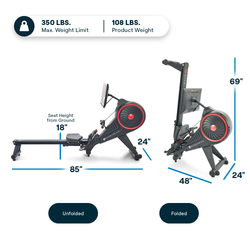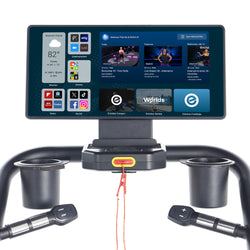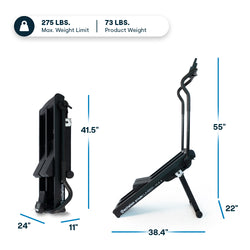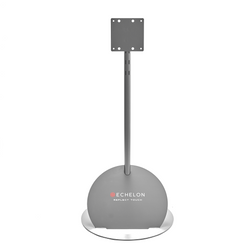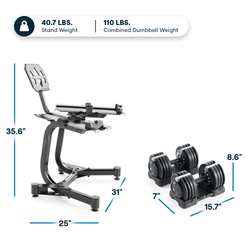Meditation 101: From Novice to Guru

Meditation is a practice that has been around for centuries, with roots in various spiritual and religious traditions. However, in recent years, it has gained popularity as a tool for stress relief, mindfulness, and overall well-being. In this blog post, we will explore the journey from being a novice in meditation to becoming a guru of the practice.
The Basics of Meditation: Where to Start
Embarking on the journey of meditation begins with simplicity. Initially, the goal is to carve out a tranquil space where you won't be disturbed. This could be a small corner of your room, a comfortable chair, or even a spot in nature. Once you've settled into your chosen environment, adopt a comfortable posture. You might sit with your legs crossed, lay flat, or even stand - the key is bodily ease to prevent unnecessary distractions. With your eyes gently closed, direct your attention to your breathing. Notice the rhythm of your breaths - the inhale and exhale - without trying to alter it. This focus on breathing serves as your anchor, helping to guide your mind away from the day's clutter and noise. Beginning with short, manageable sessions, perhaps five minutes in length, will make the practice approachable. Over time, as comfort and concentration improve, extending the duration of your meditation naturally follows. This foundational approach lays the groundwork for a rewarding meditation journey, encouraging consistency and patience as you progress.
Establishing a Solid Foundation: Techniques for Beginners
For those new to meditation, discovering a technique that clicks for you can be a pivotal part of the process. Exploring various methods is key, such as mindfulness meditation, where you maintain an awareness of the present moment, or loving-kindness meditation, which focuses on cultivating feelings of compassion and love towards yourself and others. Guided visualization, another approachable technique, involves following a spoken narrative to imagine a peaceful place or situation. Each of these methods offers a unique pathway to tranquility and self-awareness. Engaging with different styles allows you to tailor your meditation experience to what feels most natural and beneficial, laying a robust foundation for your practice. Experimentation is encouraged, as it fosters a deeper understanding and connection with the meditative journey.
Deepening Your Practice: Intermediate Techniques
As you journey further into the realm of meditation, expanding your skill set with intermediate techniques is a natural progression. Body scan meditation invites you to tune into each part of your body, fostering a profound connection between mind and body by recognizing physical sensations without judgment. Walking meditation transforms a simple stroll into a practice of mindfulness, focusing on the movement of your feet and the sensations of walking, thereby integrating meditation into everyday activities. Mantra meditation, utilizing repetitive sounds or phrases, can serve as a powerful tool to center your thoughts and deepen your focus. These techniques not only enhance your ability to remain present but also enrich your understanding of meditation's diverse practices. Engaging with these methods encourages a more immersive exploration of your inner self, providing pathways to greater clarity and peace. As you adapt these intermediate strategies, you'll find your meditation sessions becoming more fulfilling, marking significant milestones on your path to deeper mindfulness.
Advanced Meditation Practices: Exploring the Depths of Consciousness
Venturing into advanced meditation practices offers an opportunity to delve further into the intricacies of your consciousness, uncovering layers of awareness previously untouched. Techniques such as transcendental meditation allow for a dive beyond surface-level thought into a state of pure consciousness, where peace and clarity reside. Kundalini meditation focuses on awakening the dormant energy at the base of the spine, channeling it through the chakras to achieve enlightenment and a profound sense of connection with the universe. Vipassana meditation, often considered the ultimate challenge, emphasizes deep introspection and the observation of bodily sensations, aiming to understand the nature of existence and attain liberation from suffering. These practices, while demanding dedication and discipline, offer transformative experiences that can significantly alter one's perception of self and reality, guiding the practitioner towards a profound inner journey and a higher state of consciousness.
Integrating Meditation into Your Daily Life
Incorporating meditation into your everyday routine can transform the way you approach both the highs and lows of daily living, allowing you to maintain a centered and peaceful mindset amidst chaos. To seamlessly blend meditation into your day, consider setting aside moments that naturally lend themselves to reflection and calm. This might mean dedicating a few minutes of your morning to meditate before the day's tasks begin to demand your attention, or perhaps pausing for a brief meditation session during a midday break, when the mind often seeks respite from the hustle. Another effective strategy is to use the transition period before sleep to reflect and meditate, thereby promoting a restful night's sleep. Additionally, leveraging technology, such as meditation apps or timers, can help remind you to take these essential pauses. It's also beneficial to be creative in finding moments for mindfulness throughout your day, such as practicing deep breathing or a quick body scan during short breaks. These intentional practices help weave meditation into the fabric of your life, enriching your daily experience with its profound benefits.
Overcoming Obstacles: Tips for Sustaining Your Practice Long-Term
Maintaining a consistent meditation practice can sometimes feel challenging due to various hurdles that might arise. One common barrier is the struggle to allocate time in a busy schedule for meditation. Addressing this requires prioritizing your practice as you would any important activity, by setting aside specific times for meditation, even if they're brief. Distractions, both internal and external, can also disrupt your focus. To counter this, find a quiet space where interruptions are minimized and gently bring your attention back to your meditation object whenever you notice your mind wandering. Additionally, encountering mental resistance is normal. This can manifest as boredom, restlessness, or doubt in the practice’s benefits. When these feelings emerge, it's crucial to remind yourself of the reasons you started meditating and the benefits you’ve experienced. Acknowledging these challenges as part of the process and meeting them with patience and perseverance can strengthen your meditation practice, making it a durable part of your lifestyle.







































